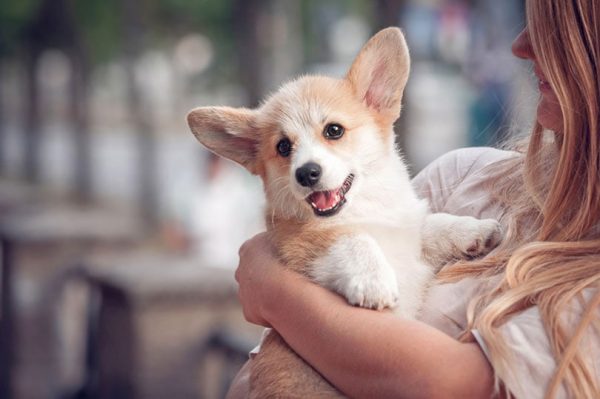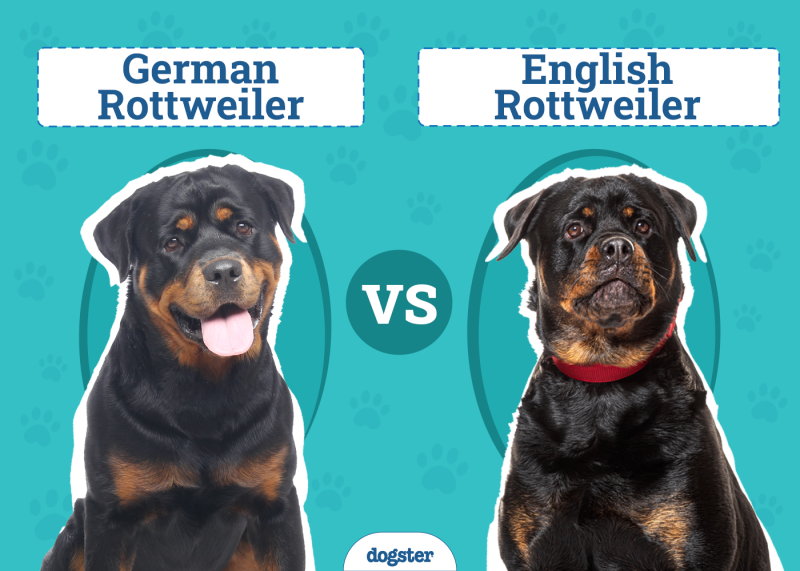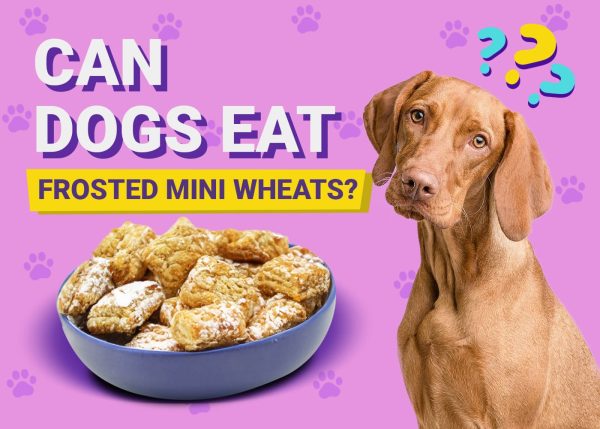In this article
View 2 More +Note: This article’s statistics come from third-party sources and do not represent the opinions of this website.
Dogs have been working alongside humans for thousands of years since the earliest interactions between the two species. Today, dogs partner with humans in jobs ranging from sniffing out drugs and bombs to scaring flocks of birds away from airport runways. Few of those jobs are as personally life-changing, however, as the work performed by service and therapy dogs.
In this article, we’ll tell you several service dog and pet therapy statistics from the UK. These will include how many service dogs are in the UK, as well as some basic service dog and animal-assisted therapy statistics. We’ll also answer some burning questions about these special animals.

Top 16 UK Service Dog and Pet Therapy Statistics
- Over 7,000 people are partnered with service dogs certified by Assistance Dogs UK.
- Canine Partners has 400 service dogs currently paired with physically disabled individuals in the UK.
- 850 new guide dogs are matched with visually impaired people in the UK each year.
- 193 hearing assistance dogs were placed with deaf people in the UK between 2019 and 2020.
- About 6,300 Pets As Therapy (PAT) dogs currently work across the UK.
- In 2016, there were 60 medical alert dogs in the UK.
- The UK Guide Dog Association breeds about 1,500 puppies a year to train as future assistance dogs.
- Only 50%-60% of these puppies training to become assistance dogs complete their training.
- It takes up to 2 years to train a disability assistance dog.
- It takes 9–12 months to train and certify a Post-Traumatic Stress Disorder (PTSD) assistance dog.
- Training a medical detection dog takes 18 months.
- Diabetic alert dogs identify 83% of low blood sugar episodes.
- In one study, medical detection dogs were 94% accurate in identifying COVID-19 infections.
- SupportDogs UK spends an estimated £36,000 to train and support their assistance dogs during their working career.
- GuideDogs UK spends £65.8 million to provide their guide dog services.
- Pets As Therapy carries public liability insurance with an indemnity limit of £10 million.


Service Dogs and Therapy Dogs in the UK by the Numbers
1. Over 7,000 people are partnered with service dogs certified by Assistance Dogs UK.
(ADUK)
Assistance Dogs UK is the umbrella organization of several service dog training groups. The UK has no official registry for assistance dogs, so the ADUK recognizes the animals trained by its member organizations.

2. Canine Partners has 400 assistance dogs partnered with physically disabled individuals in the UK.
(CaninePartners)
Canine Partners trains dogs to assist people with a variety of physical disabilities, including wounded military veterans. Approximately 1.2 million people in the UK use a wheelchair, and the charity had 78 people on a waiting list for an assistance dog at the end of 2021.
3. 850 new guide dogs are partnered with visually impaired people in the UK each year.
(BBC)
GuideDogs UK is the primary organization that breeds, trains, and places guide dogs in the UK. Seeing-eye dogs can be placed with those suffering from any level of serious visual impairment. Visually challenged people of any age, including children, are eligible to be considered for a service dog.

4. 193 hearing assistance dogs were placed with deaf people in the UK between 2019-2020.
(Hearing Dogs)
Approximately 900,000 people in the UK have severe or profound hearing loss. Hearing Dogs For Deaf People, the primary training group, received 474 applicants for those 193 service dogs. 44 of the 193 dogs were placed with deaf children.
5. About 6,300 Pets As Therapy (PAT) dogs currently work across the UK.
(Priory Group)
Pets As Therapy acts as an assessment and certification group for privately owned dogs who are trained to perform animal-assisted therapy work. These dogs work throughout the country, visiting hospitals, nursing homes, and schools, often as part of mental health and addiction treatment programs.

6. In 2016, 60 medical alert dogs were working in the UK.
(Diabetes Times)
The medical detection dogs pair with people suffering from chronic medical conditions, such as diabetes. The dogs help keep their owners safe by alerting them to dangerous changes in their health, like a drop in their blood sugar.

UK Service and Therapy Dog Training and Impact Statistics
7. The UK Guide Dog Association breeds about 1,500 puppies per year to train as future service animals.
(Guide Dogs)
Since Guide Dogs opened its own breeding center in 2011, they’ve produced almost 11,000 puppies to enter into training. The group breeds mostly Labradors, Golden Retrievers, and German Shepherds. They also have some curly-coated Retrievers and two Standard Poodles to produce lower-shedding guide dogs.

8. Only 50%–60% of these puppies complete their training and qualify as guide dogs.
(Sky News)
Before entering formal training, puppies are put through various assessments and early obedience training. Those who flunk out may be placed as pets or trained for other service work, like medical detection dogs. Guide Dogs UK is currently working on a genetic study involving 3,000 puppies, trying to identify ideal guide dog traits and increase their success levels.
9. It takes up to 2 years to train a disability assistance dog.
(Support Dog)
According to Support Dog UK & EU, it can take up to 2 years for a disability assistance dog to be completely trained. The process involved several stages. These include breeding, socialization, basic training, and advanced training.

10. It takes 9–12 months to train a Post-Traumatic Stress Disorder (PTSD) assistance dog.
(Working Dogs UK)
Unlike other charities, Working Dogs UK works almost exclusively with rescued adult dogs rather than puppies. The dogs are matched with a qualified emergency worker or armed forces veteran suffering from PTSD, and the pair are trained together. PTSD assistance dogs help the survivors manage their anxiety, emotional trauma, and mental health disorders.
11. Training a Medical Detection Dog takes 18 months.
(Telegraph)
Medical detection dogs are trained to identify the specific odors of the health condition suffered by their partner. Besides diabetes, the Medical Detection Dog training organization has dogs helping people with severe allergies, Addison’s disease, and other disorders. They also train dogs to detect specific diseases such as malaria and, more recently, COVID-19.
12. Diabetic alert dogs identify 83% of low blood sugar episodes.
(Plos One)
This statistic comes from a study that used 27 dogs trained by Medical Detection Dogs. Before being certified, diabetic alert dogs must demonstrate a consistent 75% or better accuracy rate in catching low blood sugar over three months. The study also found that the dogs correctly identified high blood sugar 67% of the time.

13. In one study, medical detection dogs were 94% accurate in detecting Covid-19 infections.
(Plos One)
This study examined whether dogs could learn to detect COVID-19 in both urine and saliva samples. Based on this and other studies that proved how accurately dogs detect COVID-19, Medical Detection Dogs is now training COVID-detecting canines.

UK Service Dog and Pet Therapy Financial Statistics
14. SupportDogs UK spends an estimated £36,000 to train and support their assistance dogs throughout their working career.
(SupportDogs UK)
SupportDogs trains autism assistance dogs, seizure detection dogs, and disability assistance dogs. They don’t charge clients for the dogs they place. The amount listed covers the dog’s training, training the client and dog together, and the costs to care for the dog during their time working with their human partner.

15. GuideDogs UK spends £65.8 million to provide their guide dog services.
(Guide Dogs)
GuideDogs UK reports spending roughly £65.8 million to provide their guide dog services. They also spend roughly £9.3 million to provide services like My Life Skills and My Sighted Guide services for adults, as well as £10 million to provide services to families, children, and young people.
16. Pets As Therapy carries public liability insurance with an indemnity limit of £10 million.
(Pets As Therapy)
The group must also adhere to individual policies and protocols of the places they’re visiting. Even with accredited, well-managed programs like PAT, any animal activity carries some risk, including animal-assisted therapy. Part of the costs of operating the program include maintaining extensive liability insurance.

Frequently Asked Questions About UK Service Dog and Pet Therapy
What Laws Protect Service Dogs and Their Partners in the UK?
The Equality Act of 2010 and the Disability Discrimination Act of 1995 specifically reference the rights of those with qualified service dogs. Those with service dogs must be allowed to take them into stores, on public transit, at school, work, etc. Landlords are not allowed to discriminate against those with service dogs.
Because there’s no official registry of service dogs, their owners don’t have to prove their identification, although it may be helpful, which is why the ADUK provides branded gear and ID booklets to dogs trained by its members (ADUK).

What About Emotional Support Dogs?
Unlike service dogs trained to assist, emotional support dogs simply provide comfort and friendship. There’s no official certification or registry for emotional support dogs in the UK, and they don’t have the same rights to access and non-discrimination that service dogs do.
Some people attempt to obtain “documents” or gear that identifies their dog as a service dog or emotional support dog to bring them on planes, for example. This strategy may or may not work and can also put people at risk when an untrained, not temperament-tested dog is placed in stressful and unfamiliar situations (ADUK).
Are All Service and Therapy Dogs Purebred?
Definitely not! As we mentioned earlier, Working Dogs UK trains rescue dogs for PTSD assistance work. Therapy dogs can be any breed or mixed breed, so long as they have the right temperament for the job. Even Guide Dogs UK, which keeps purebred dogs for breeding stock, often deliberately crossbreeds their animals.
Labrador and Golden Retriever crossbreeds are often considered the best for service dog work. At the end of 2021, Guide Dogs welcomed their largest-ever litter of puppies, 16 bundles of joy born from a German Shepherd mother and a Golden Retriever father (BBC).

Can People Train Their Own Dogs to Be Service Dogs?
Generally, accredited service dog organizations do not train people’s existing dogs for service work, although exceptions can be made. SupportDogs UK, for example, will train an existing pet to serve as a disability assistance dog.
Non-accredited or unscrupulous trainers may promise to train your dog to perform service work but remember, only the ADUK will only provide ID booklets for dogs whose training they can verify.

Conclusion
As we’ve learned, service dogs in the UK are carefully selected, highly trained, and, frankly, a bit of an investment. They also provide invaluable freedom, support, and self-sufficiency to thousands of individuals throughout the country. Science continues to support the benefits provided by animal-assisted therapies for numerous mental and physical conditions. The bond between humans and dogs is unlike any other, and these roles they play are just one shining example of that connection (Medical News Today).
See also:
- How Much Does Dog Sitting & Dog Boarding Cost in the UK? Update
- Therapy Dog vs Service Dog: Vet-Verified Differences


















